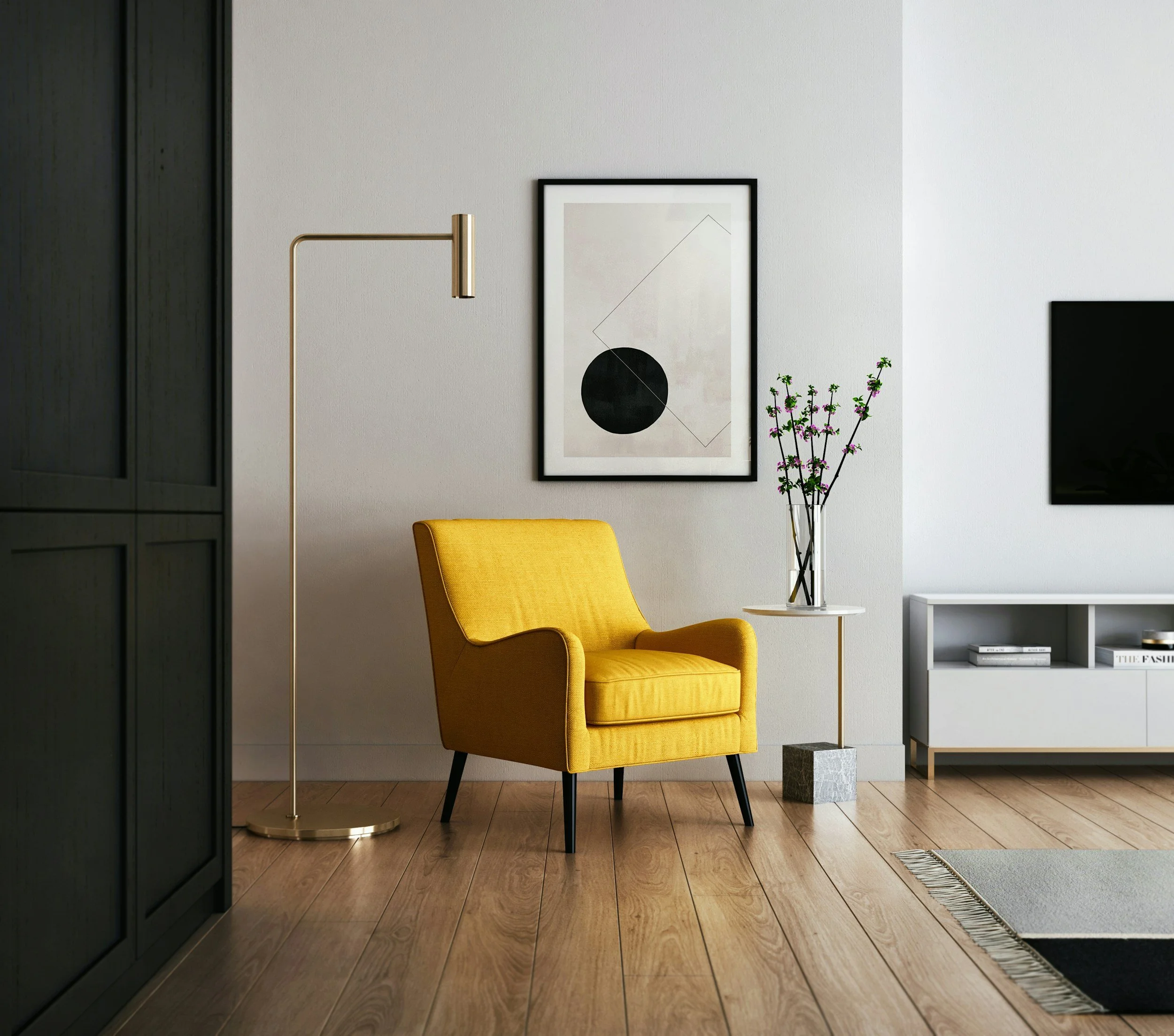From Pinterest to Shopping List
“TL;DR — Create a Pinterest board for the room you’re designing, then identify commonalities across the pins. When analyzing your pins, move from broad strokes (like common moods and styles) to details (like specific furniture and paint colors). WRITE THEM DOWN.”
Scrolling Pinterest can be equal parts inspiration and frustration. Sometimes it’s easy to figure out how to translate the beautiful images of perfect rooms to your home… and other times… not so much. Here is a process to help ensure your best design ideas don’t live and die on your Pinterest boards.
Start Fresh
Start a fresh Pinterest board just for the space you’re designing. At this stage, pin anything that you find appealing that is relevant to the space. Aim for at least 25 pins.
Close Looking
You’ll naturally start identifying patterns within your saves. In the art history world, we call this “close looking.” It takes some practice, but your time investment now will pay dividends (both in time and money) when you start purchasing items.
Close looking is the process of deconstructing an image of a room into its elements so that you can rebuild a room with the same feel in your own home.
Start by selecting one of your favorite pins. Look at it in 3 layers, starting broad and then getting more granular. Jot down your responses.
Mood: What are three words that come to mind when you first see this image? Natural? Bright? Colorful? Dark? Moody? Earthy?
And how do you feel when you look at it? Relaxed? Inspired? Energized?
Style: Go a little deeper. What style is the room? Is it more traditional or contemporary? Bohemian? Modern? Farmhouse? Japandi? If you’re stuck on styles, check out my Style Cheat Sheet. What are the main colors of the room? What metal tones - gold, black, silver?
Elements: What individual pieces make up the mood and style you described? An earth-toned traditional rug? Gold framed pictures? A velvet couch? A modern chandelier? Botanical wallpaper? And how much weight does each of those carry in terms of making you love the space? An easy way to answer this question is “the takeaway” - if the room didn’t have that piece, would you still love it? If “no” or “not as much,” you’re on to something.
Close Looking Analysis Example
Mood: Clean, tidy, fresh, young, balanced
Style: More modern, minimalist black and white with pop of color.
Elements: Bold chair, sleek gold lamp, minimalist black and white artwork, fringey rug with bold and simple pattern, marble base slim end table, large scale floral arrangement
Your Shopping List
Patterns will start to emerge in your analysis. You’ll notice that you’ve written “large scale pop artwork” or “round dining room table” multiple times, for instance. And from here, it’s an easy jump to your shopping list.
And of course, if you want a thought-partner to help you through this process, I’m happy to help!
